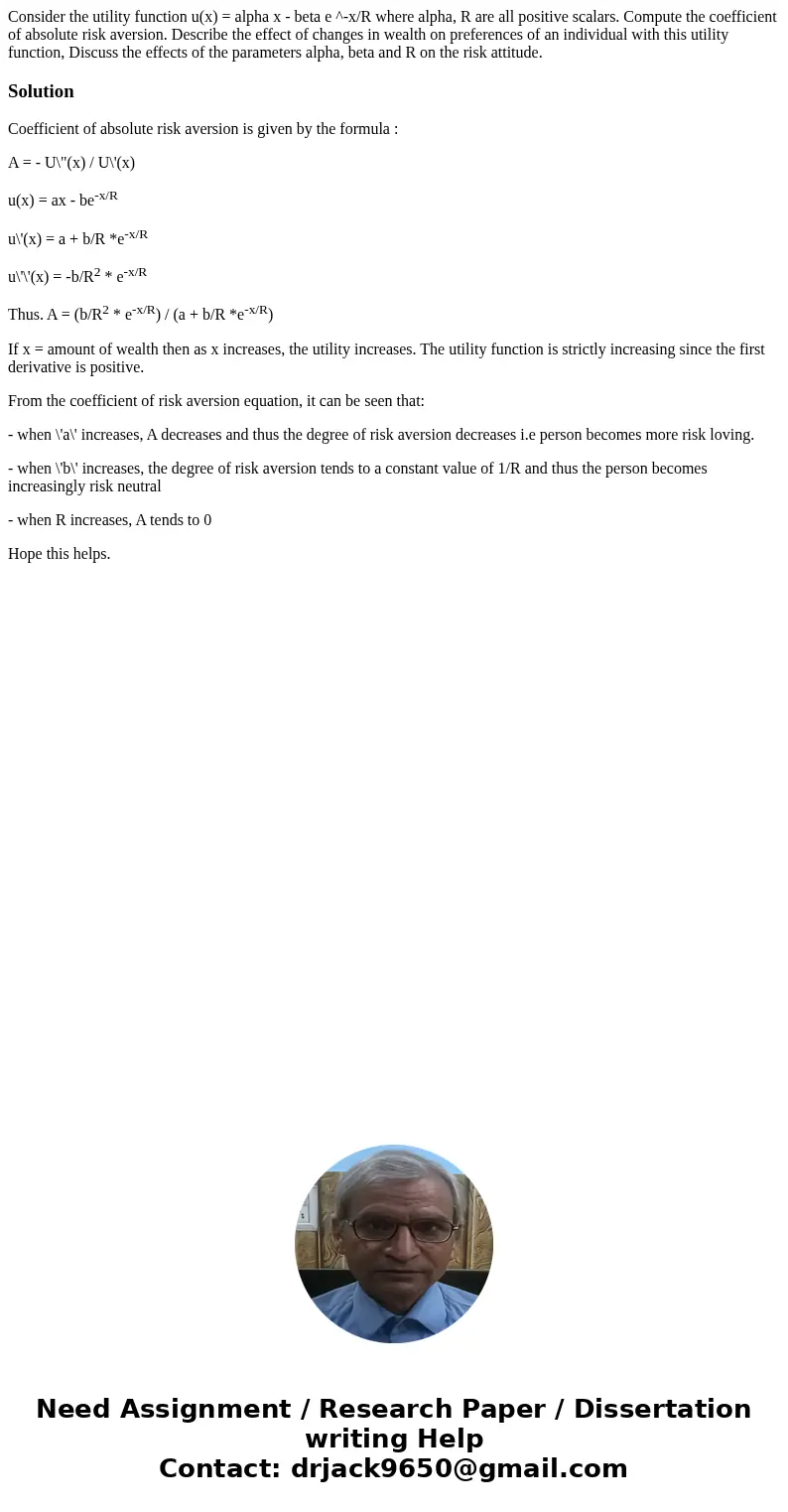Consider the utility function ux alpha x beta e xR where a
Consider the utility function u(x) = alpha x - beta e ^-x/R where alpha, R are all positive scalars. Compute the coefficient of absolute risk aversion. Describe the effect of changes in wealth on preferences of an individual with this utility function, Discuss the effects of the parameters alpha, beta and R on the risk attitude.
Solution
Coefficient of absolute risk aversion is given by the formula :
A = - U\"(x) / U\'(x)
u(x) = ax - be-x/R
u\'(x) = a + b/R *e-x/R
u\'\'(x) = -b/R2 * e-x/R
Thus. A = (b/R2 * e-x/R) / (a + b/R *e-x/R)
If x = amount of wealth then as x increases, the utility increases. The utility function is strictly increasing since the first derivative is positive.
From the coefficient of risk aversion equation, it can be seen that:
- when \'a\' increases, A decreases and thus the degree of risk aversion decreases i.e person becomes more risk loving.
- when \'b\' increases, the degree of risk aversion tends to a constant value of 1/R and thus the person becomes increasingly risk neutral
- when R increases, A tends to 0
Hope this helps.

 Homework Sourse
Homework Sourse